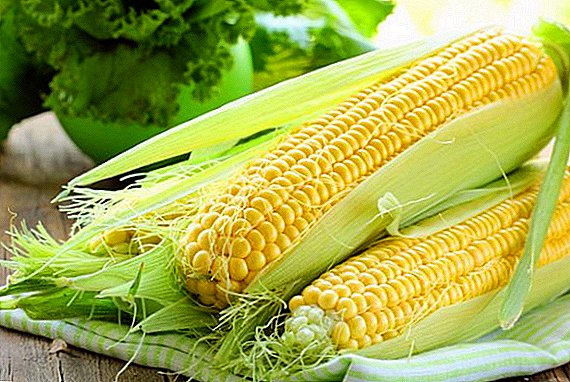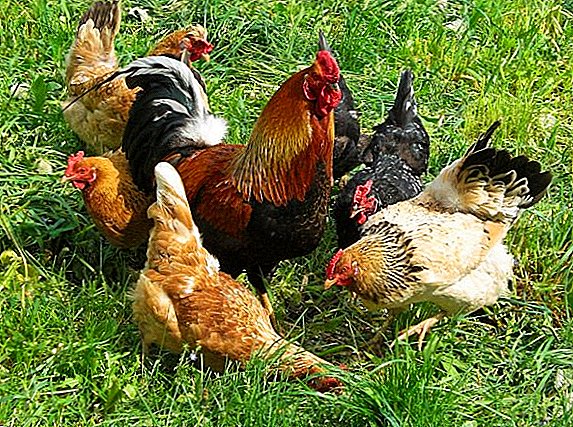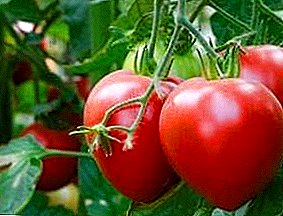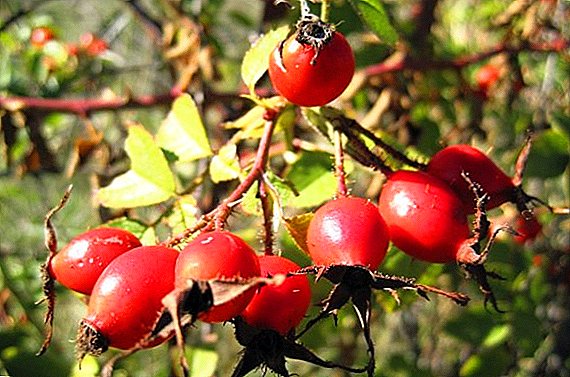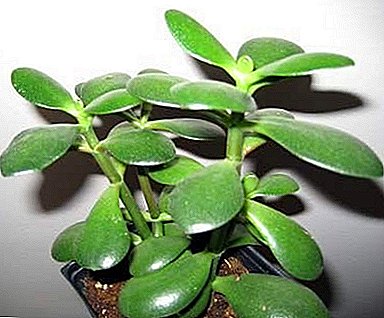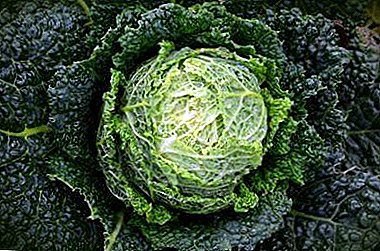
Savoy cabbage is a garden crop, one of the many subspecies of the cabbage family. It belongs to the Sabuada variety group. North Africa and the western part of the Mediterranean are considered to be the motherland of the mother plant of Savoy cabbage. It was bred in the county of Savoie, which was the reason for just such its name.
Savoy cabbage is a close relative of the white cabbage, but it is slightly different in taste from its relative. In our country, this variety is not planted everywhere, mistakenly suggesting that it is very demanding in terms of care.
Cultivation features
The most interesting thing is that you can grow this subspecies of cabbage even in central Russia.
Seeds of savoy cabbage can germinate at a temperature of +3 degrees, and calmly transfer frosts to -7.
It is worth noting that the low temperature for this plant during the growth period has a positive effect - it becomes tastier and juicier.
Consider which factors you should pay attention to when growing:
 soil features for planting;
soil features for planting;- humidity;
- temperature conditions.
The soil for planting this crop must have a high fertility.. It must be enriched with mineral and organic fertilizers, especially if it is planned to plant early and late ripening varieties.
Despite the fact that this type of cabbage has a high resistance to moisture deficiency, an adult culture requires a sufficient amount of water. Otherwise, the leaves will be tough and not juicy. As for seedlings, watering them too often is not necessary.
For cabbage to sprout, it is enough for it to create the necessary conditions.. Unlike the white culture, the seeds germinate well at a temperature of 16-18 degrees.
In order for the seedlings to settle down well in the ground, it is enough that the soil warms to -4 degrees, for the early ripening varieties to -2.
Sorta
Savoy cabbage is divided into three varieties: early, mid-ripening and late. Among the early varieties, the following have proven their worth:
- Vienna early - an excellent grade with corrugated leaves. The head is dark green, rounded, weighing 1 kg and medium density. It has excellent taste.
- Golden early - high-yielding, excellent grade with heads of 800 grams. The head is resistant to cracking with highly blistering sheets of dark green color. The harvest begins to give on the 110th day from the moment of sowing the seeds.
- Compars - ultra early hybrid that matures on the 80th day. The variety is remarkable for its resistance to pests and diseases. The heads of the light-green color do not crack and have a great taste.
- Anniversary 2170 - a ripening plant, but its heads can crack when overgrown. The harvest gives for 90 day. Head weighing 800 grams and medium density, with slightly corrugated leaves.
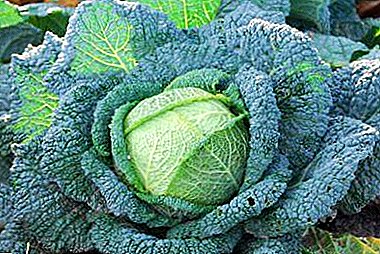 Petrovna - the early ripe grade, ripens for 110 days, heads of cabbage weighing 1 kg, light yellow on a cut.
Petrovna - the early ripe grade, ripens for 110 days, heads of cabbage weighing 1 kg, light yellow on a cut.
Mid-season Savoy cabbage with large heads of cabbage and high yield. Unlike the first subspecies, it can be stored and used for ferment for a long time:
- Twirl 1340 - mid-season variety with flat-headed heads weighing up to 2.5 kg. Density depending on agricultural practices can be good or average. Leaves are bubbly with a small corrugation. Very tasty, but kept very bad.
- Crom - mid-season variety, with dense cabbage weighing 2 kg, small stalk, leaves wavy.
- Sphere - an excellent grade with heads of 2.5 kg with an average density. Heads do not crack, while having excellent taste.
- Melissa - an excellent hybrid of savoy cabbage, which gives the harvest for 80 day. A distinctive feature of this variety can be considered as rather large heads of cabbage, whose weight can reach up to 4 kg, while they do not crack and are resistant to fusarium.
Late varieties of savoy cabbage have good keeping quality and taste:
- Stilon - late, frost-resistant variety, able to withstand frosts down to -6 degrees, while the heads of 2.5 kg do not lose their taste.
- Ovasa - the hybrid differs in that it has large-bubble leaves. The weight of a dense head of cabbage reaches up to 2.5 kg.
- Nadia - head of cabbage varieties do not crack and are not subject to fusarium. Harvest get on the 140th day, it is a dense cabbages weighing 3 kg. leaves are soft and tender.
- Uralochka - frost-resistant hybrid with round heads, weighing 2.5 kg. The leaves of this cabbage without a vein of light-green color.
- Lace maker - the heads of this variety grow up to two kilograms, while they have a reddish tint and excellent taste.
It is worth noting that the Savoy cabbage is very light-requiring, for a good harvest, it needs a 13-hour light day.
How to choose a variety of savoy cabbage for planting on the site?
Everything will depend on needs, if you prefer to use cabbage in salads, fresh, it is better to give preference to early ripe varieties and hybrids with medium ripening periods. If you want to ferment for the winter or pickle, then plant late-growing varieties.
A photo
Then you can see the photos of different varieties of savoy cabbage.





Seeds
The technology of growing Savoy cabbage from seeds is almost the same as the method of growing white cabbage.
The most important thing for young shoots is timely watering.. If you follow the instructions, you can get good seedlings, and in the future - a rich harvest.
You can buy savoy cabbage seeds at any specialty store or write out via the Internet.
The cost of one sachet is about 40 rubles. The variety should be chosen based on your needs and taste preferences.
Instructions for growing seedlings
Season
It all depends on the variety of savoy cabbage. Usually the period from seeding to transplant is 30-50 days. For example, early varieties are sown on seedlings in the period from 5 to 10 March, and later from 10 to 20 March.
If the cabbage is sown directly in the ground, then choose the middle of April for planting, sow under the film. Dates may shift depending on the weather conditions of the growing region.
Priming
 To grow a good crop of savoy cabbage, you need to know its biology. It is understood that cabbage photophilous, not afraid of frost, can grow well in wet soil, but it is very demanding on soil fertility.
To grow a good crop of savoy cabbage, you need to know its biology. It is understood that cabbage photophilous, not afraid of frost, can grow well in wet soil, but it is very demanding on soil fertility.
The soil for planting should be 80% peat, soft, but not too loose. It is also worth adding 5% of sand and compost to the ground. Ashes are added to a tablespoon for every kilogram of soil; it will serve not only as fertilizer, but also as protection against a black leg.
If there is an infection or pests on a plot in the land, then it is better to refuse to collect the soil, since the seedlings of this variety are very sensitive to these diseases.
Landing
Before sowing the seeds must undergo training activities. Planting seeds in the soil must begin with disinfection.. Seeds of savoy cabbage are treated with hot water of +50 degrees, lower the bag with planting material for 15 minutes, then under a stream of cold water for 2 minutes. Then the seeds should be dried and kept in the fridge for 24 hours. After that, you need to dry them again.
This process will not only kill all infections that may be on the surface, but also contribute to rapid germination. It is worth noting that reliable suppliers of this planting material carry out such seed treatment on an industrial scale, prior to sale.
Also, before planting, you can increase the frost resistance of seeds, soaking them in water for 24 hours, the water temperature in this case should be equal to +2 degrees.
The soil mixture for planting seeds should be watered with a strong solution of potassium permanganate. This is necessary for its disinfection.
Sowing
 Some gardeners believe that it is enough to prepare the soil properly, process the seeds, and the seedlings will turn out great. But it is not.
Some gardeners believe that it is enough to prepare the soil properly, process the seeds, and the seedlings will turn out great. But it is not.
Sowing savoy cabbage needs to be approached very seriously, the only way to get the cabbages corresponding to the sort described on the bag. So:
- planting material is placed in the soil in three phases, a break between which is 4 days;
- the seeds are laid down to a depth of 1 cm, in separate cups or in a box for seedlings;
- the land is shed, both before and after sowing;
- after the appearance of the first shoots, watering is reduced to moderate.
How to transfer to open ground?
The seedling has grown, and the time has come to transfer the seedlings to the plot, for this it is worth knowing some of the features of growing this variety in the garden.
When to land?
Seedlings are transported to the ground in May (the time may move, based on climatic conditions). Planted better in the evening, or on an overcast day. It is worth remembering that if the seedlings have not reached 15 cm in height, it is better to let them grow, since the plant must have at least 4-7 true leaves.
Care
After the seedlings are transferred to a permanent place, the cultivation of cabbage is in the correct and regular watering, which is carried out as follows:
- in the first days after transplantation, you need to pour out 8 liters per square square in 2 days;
- then watering should be reduced to 1 time per week, 13 liters per square;
- the soil should be loose, it should be done daily at 8 cm in depth.
You also need to know that Savoy cabbage must be periodically spud - the first time 20 days after planting, then every 10 days.
The first hilling is carried out in conjunction with dressing with liquid organicbest suited mullein.
Diseases and pests
 Savoy cabbage is subject to the same diseases as all cruciferous ones:
Savoy cabbage is subject to the same diseases as all cruciferous ones:
- black root blotch;
- fomoz;
- blackleg;
- trachemicosis;
- downy mildew;
- vascular bacteriosis;
- Beli;
- keels;
- mosaic and alternariosis.
Most often Savoy cabbage is overcome by Alternaria and black leg. In order to protect vegetable crops from them, it is necessary to process planting material, observe planting rules, promptly clean the area from weeds and remove plant residues.
Conclusion
It is worth noting that with the right agricultural technology, you can grow a good harvest of savoy cabbage, even in the middle zone of our country. If you plant late-ripening varieties, then even in winter there will be fresh, tasty Savoy cabbage on your table.


 soil features for planting;
soil features for planting; Petrovna - the early ripe grade, ripens for 110 days, heads of cabbage weighing 1 kg, light yellow on a cut.
Petrovna - the early ripe grade, ripens for 110 days, heads of cabbage weighing 1 kg, light yellow on a cut.


